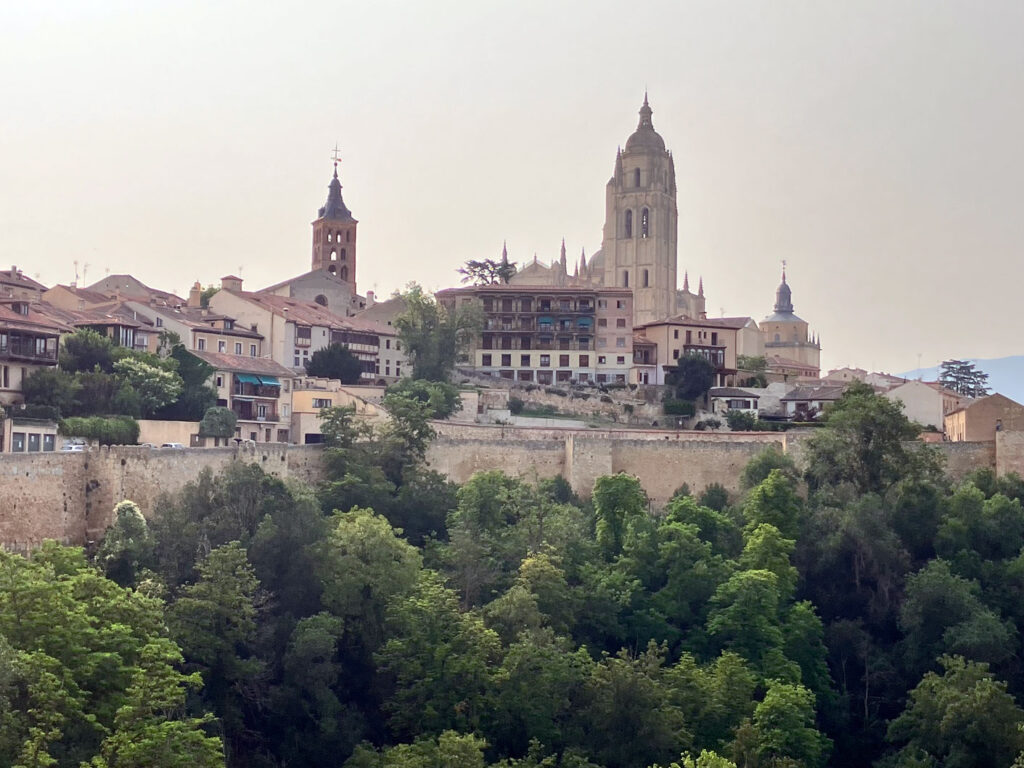Beautiful Madrid was overcrowded that summer, so we headed north from the capital city and took a short train ride to Segovia – one of the thirteen (13) cities in Spain that UNESCO endowed as a World Heritage site.
Our hotel in Madrid was just a stone’s throw from the Metro subway station. Since we were traveling in Europe with only our carry-on bags, we arrived at the Madrid-Chamartín-Clara Campoamor train station virtually hassle-free.
This train station should not be confused with the larger and more famous Madrid – Puerta de Atocha – Almudena Grandes, home to Spain’s AVE bullet trains and a leisure area featuring a spectacular tropical garden.
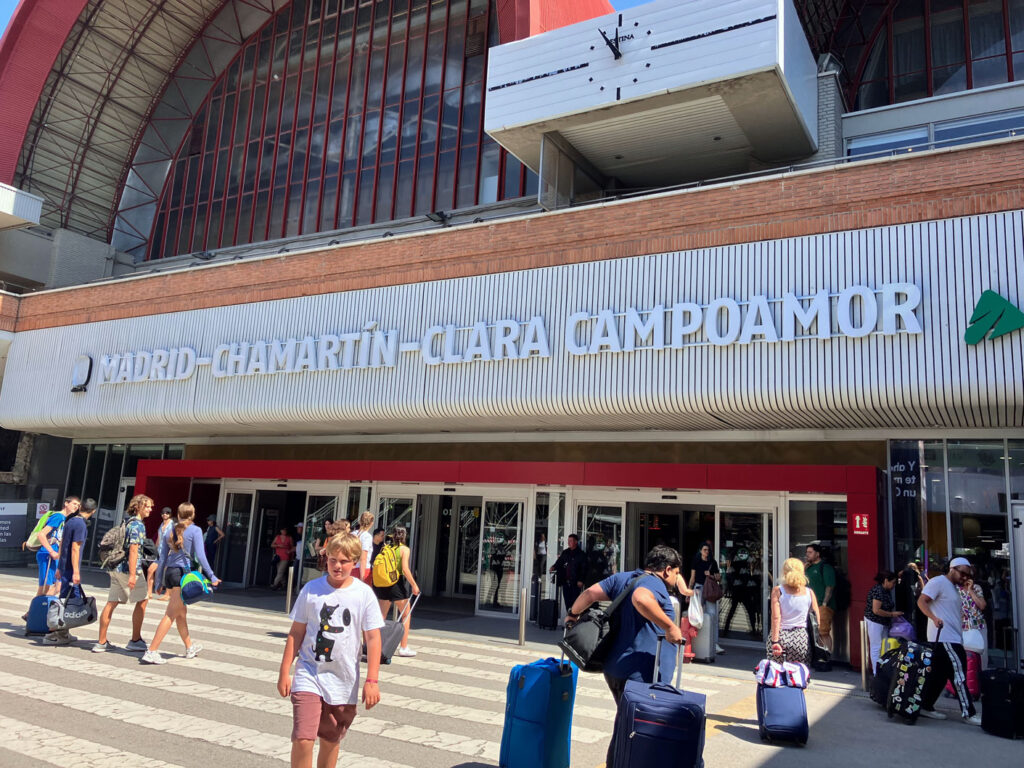
The RENFE-operated train ride from Madrid to Segovia (Euro 11.10 each) was quick and comfortable. Most European countries are well-served by trains, but Spain has some of the best ones.
We stayed longer at Chamartín station waiting for our train than we did on the ride to Guiomar Station in Segovia.
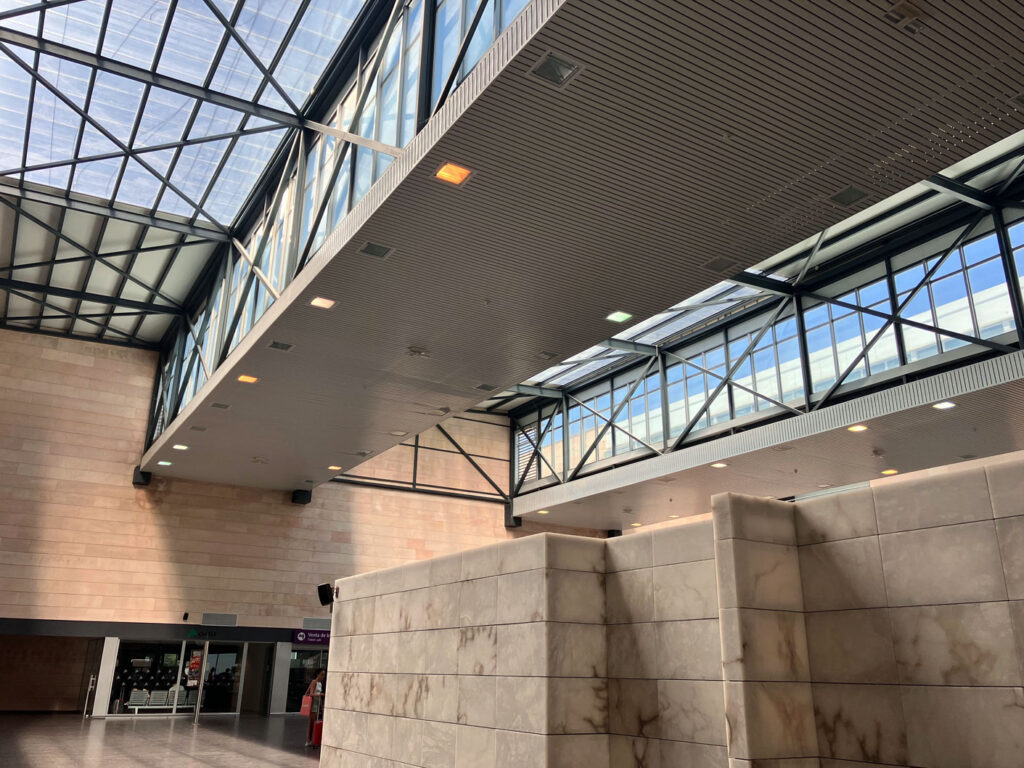
The small yet modern-looking Guiomar station (above photo) was not particularly busy during those last days of June, and the summer heat that awaited visitors from the vast plains outside was palpable.
Although there’s a public bus that serves the Guiomar train station, we opted for a taxi ride (€10) to escape the heat, take advantage of the extended daylight, and give ourselves some time to relax in our hotel room before exploring the historic Castilian city.
The taxi dropped us off in a parking lot – just off a roundabout – as most vehicles are prohibited from entering the city. This is done to prevent congestion and better preserve all the historical structures, including the two-thousand-year-old Roman aqueduct that dominates the entrance to the medieval town.
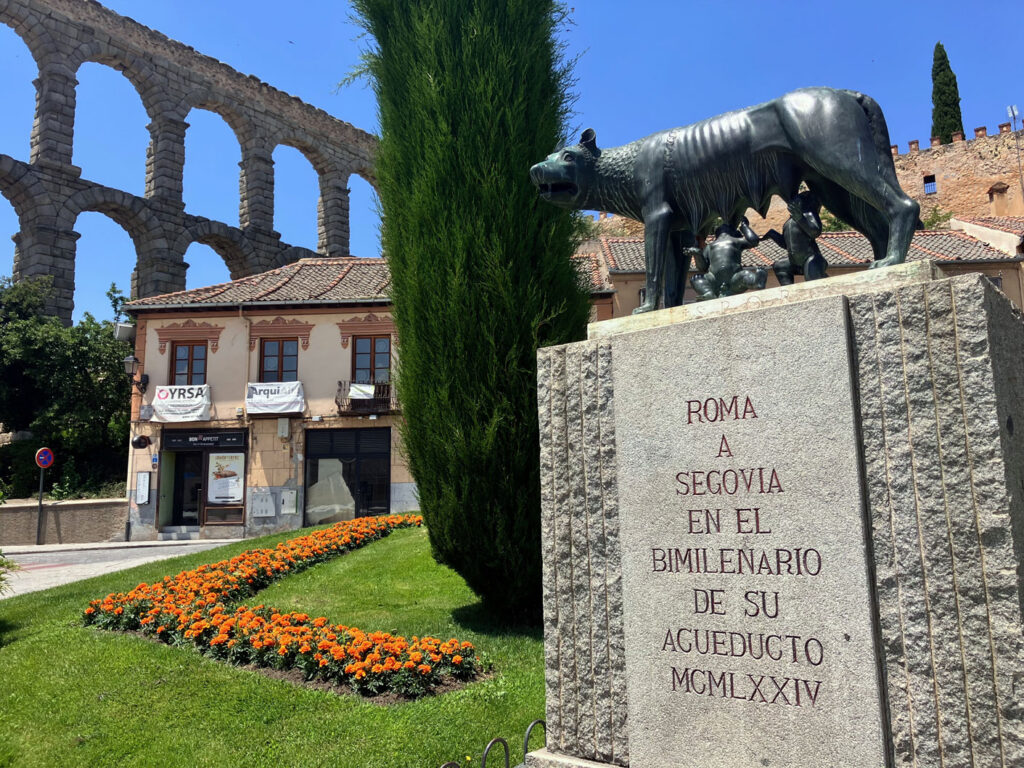
A statue of the mythical founders of Rome (Remus and Romulus) being nurtured by a she-wolf, along with a 1974 plaque (photo above ) commemorating the aqueduct’s 2,000-year history -will greet visitors just before entering the city. However, the exact date could not be verified; it’s widely speculated that it was built during the second half of the first century AD, spanning the reigns of Roman emperors Domitian, Nerva, and Trajan.
It took us about 1.5 hours after we boarded the Renfe train from Madrid to check in at our hotel in Segovia — Hotel Real Segovia. And, as luck would have it, our standard room got upgraded to a studio with a balcony that faced the main street. The studio’s floor area is more than double that of a hotel room in downtown Madrid and features an ultra-modern bathroom to boot!
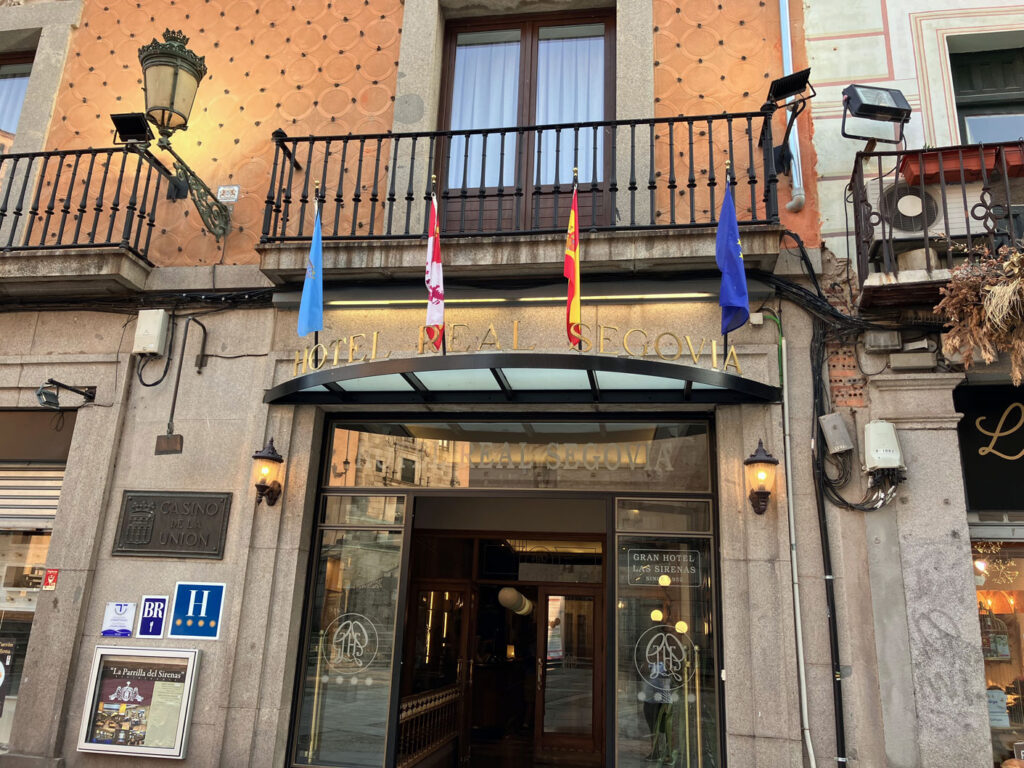
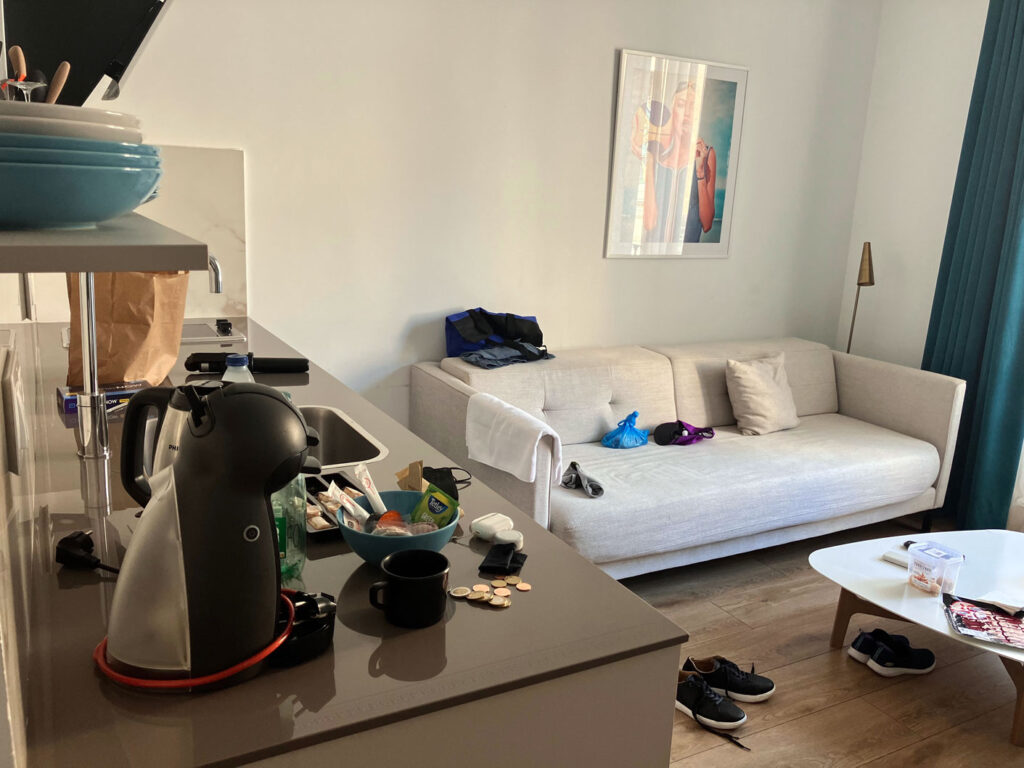
From our studio’s balcony, the Iglesia de San Martin, a medieval Romanesque-style Catholic church established in 1117, and a small plaza –Plazuela de San Martin– with the statue of Juan Bravo (1483-1521), the rebel leader who led the uprising against Charles I in the “Castilian Revolt of the Comuneros” (Castilian War of the Communities). The street where our hotel is located is also named after him.
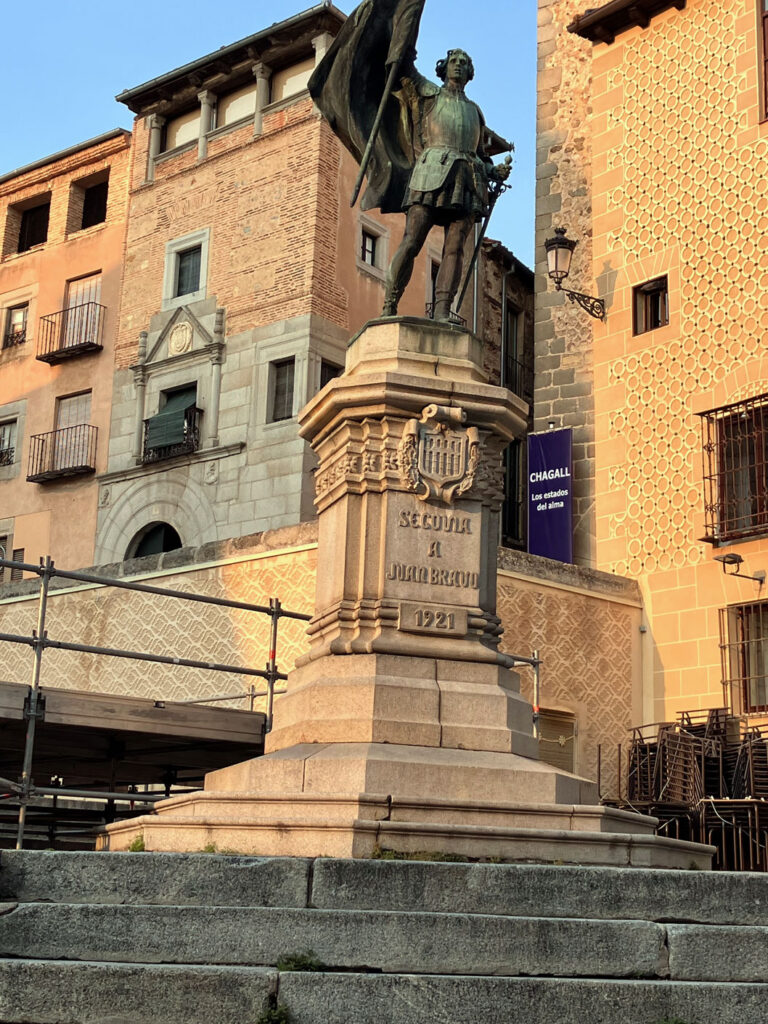
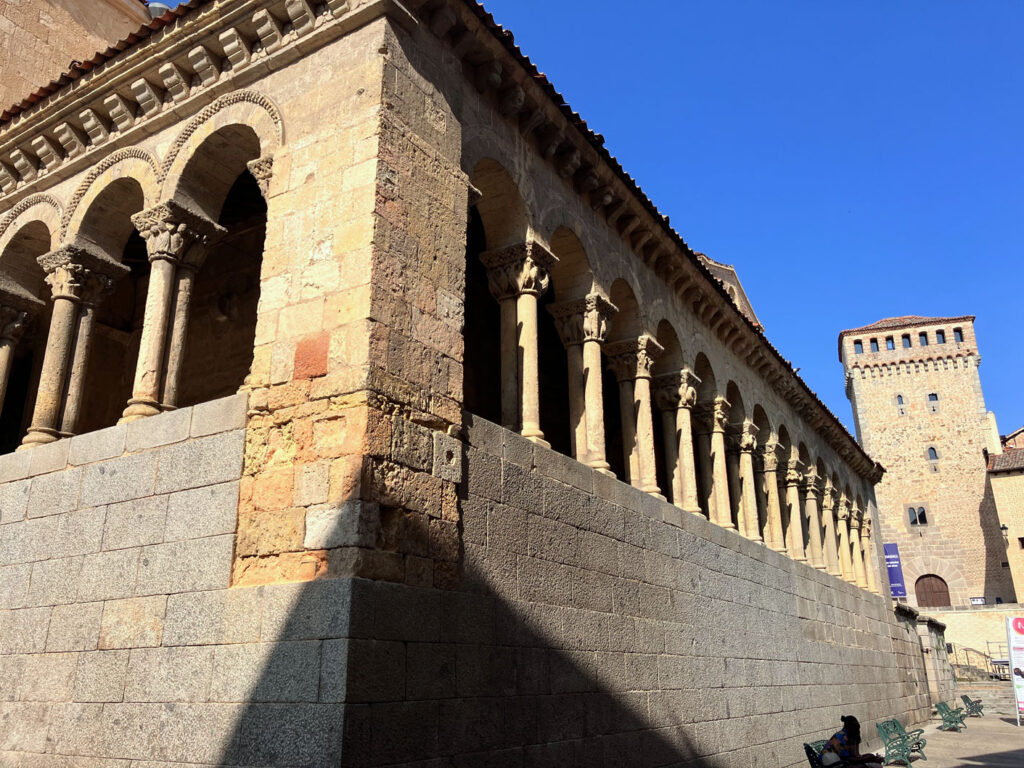
Spain, a predominantly Catholic country, is noted for its numerous churches and is dotted with statues because of its rich cultural heritage. Still, the long-standing Roman-built aqueduct, the Gothic-style Segovia Cathedral, and the Alcázar (castle) draw visitors to this medieval Castilian city.
Along the way to the main square (Plaza Mayor) where the Segovia Cathedral is situated, one can’t help but be drawn to the window displays of baked treats and various meat delicacies Spain is noted for – the variety of jamon, chorizo, morcilla, chicharrones that go well with any drinks and are widely available all day.
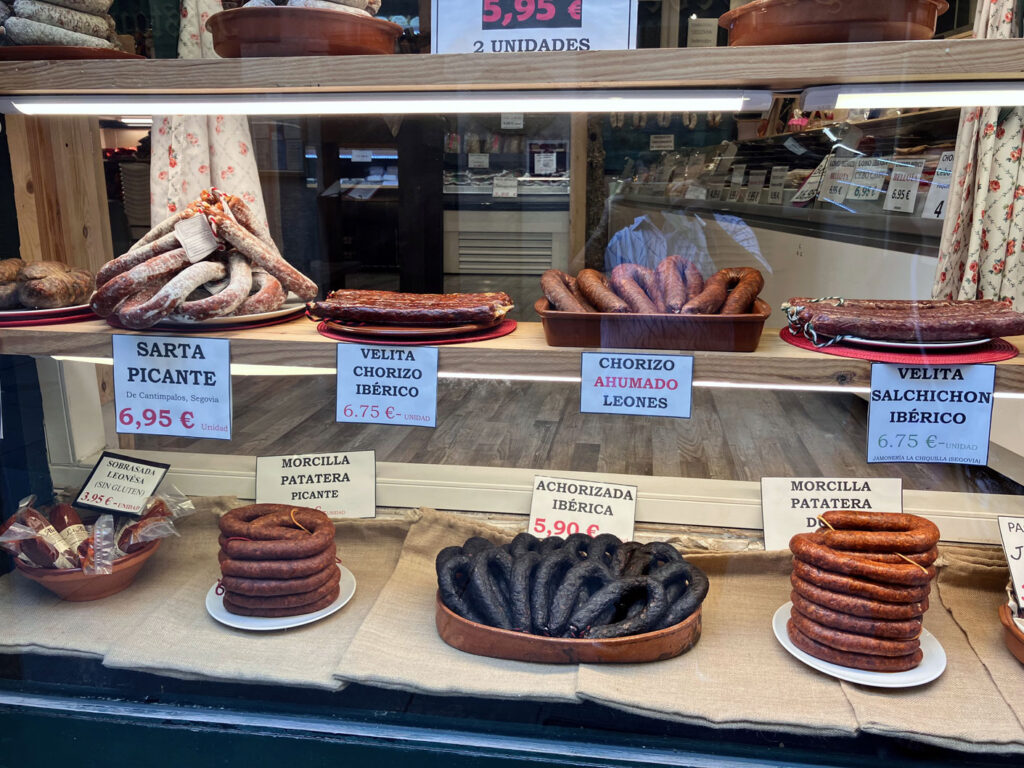
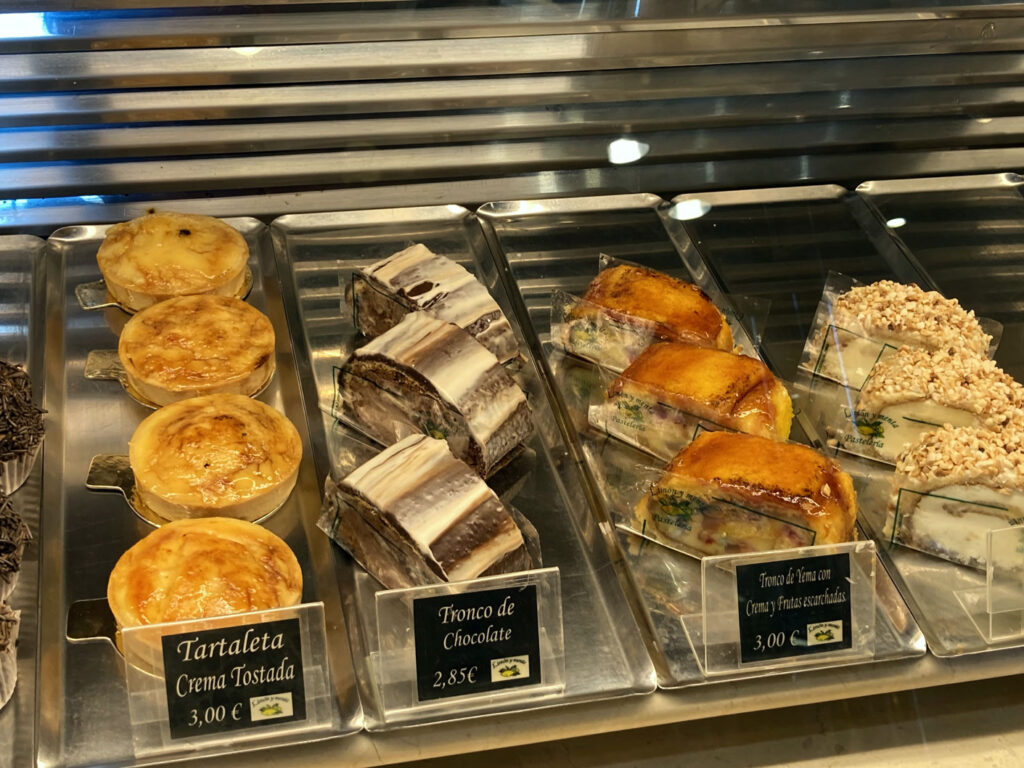
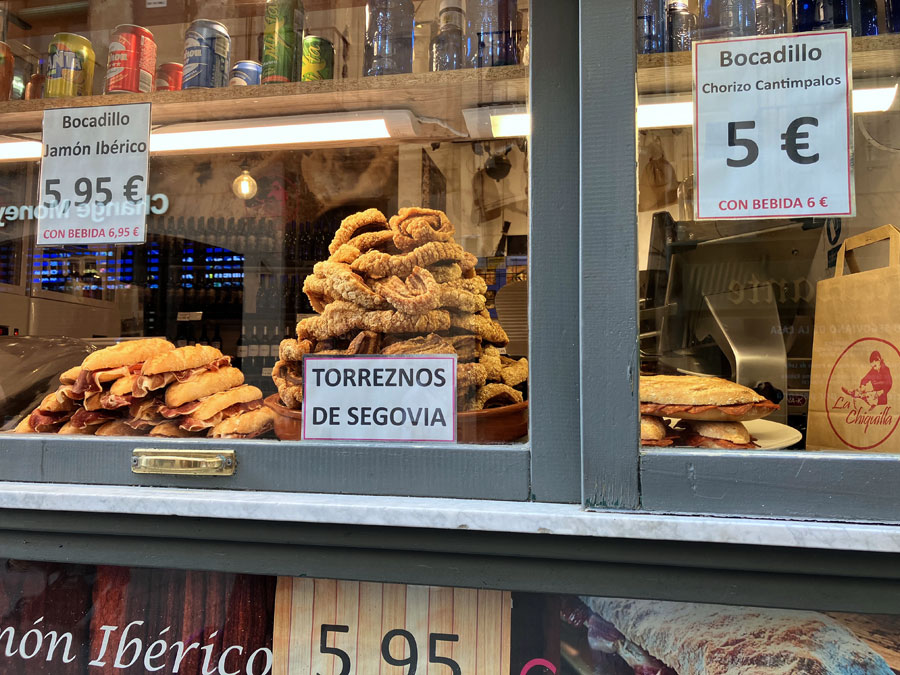
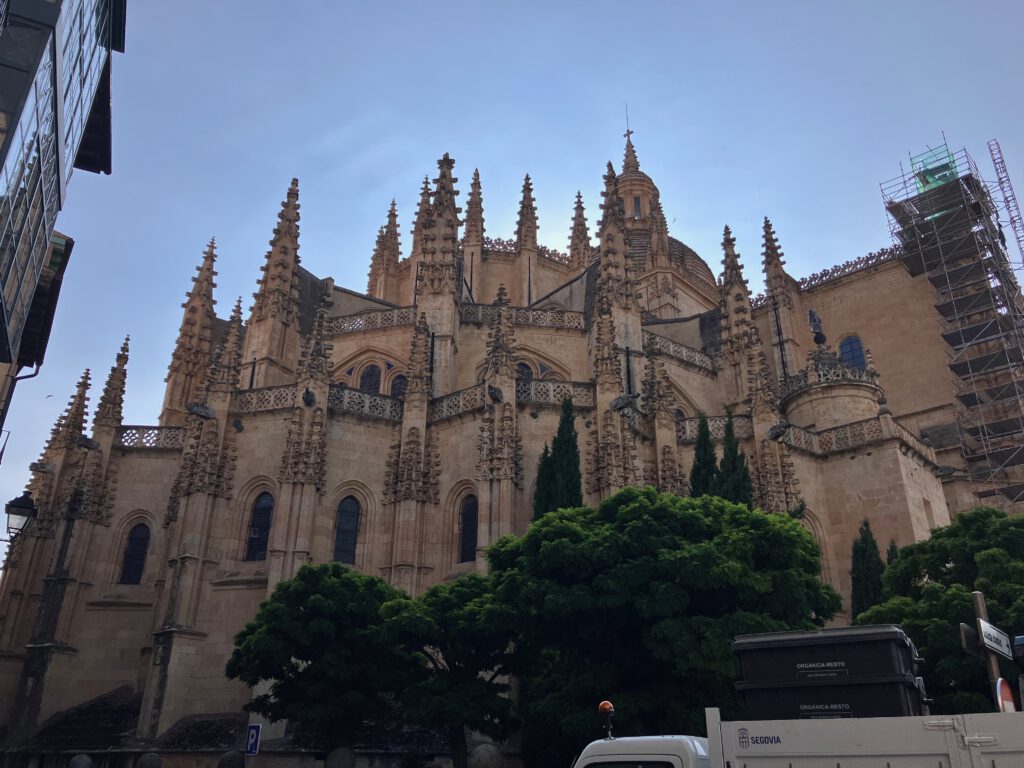
The Gothic-style Segovia Cathedral was built between 1525 and 1577, when Spain, neighboring Portugal, the Dutch, and other European naval powers were racing to colonize (or ‘discover’) other territories— including the Americas —in the ‘New World.’
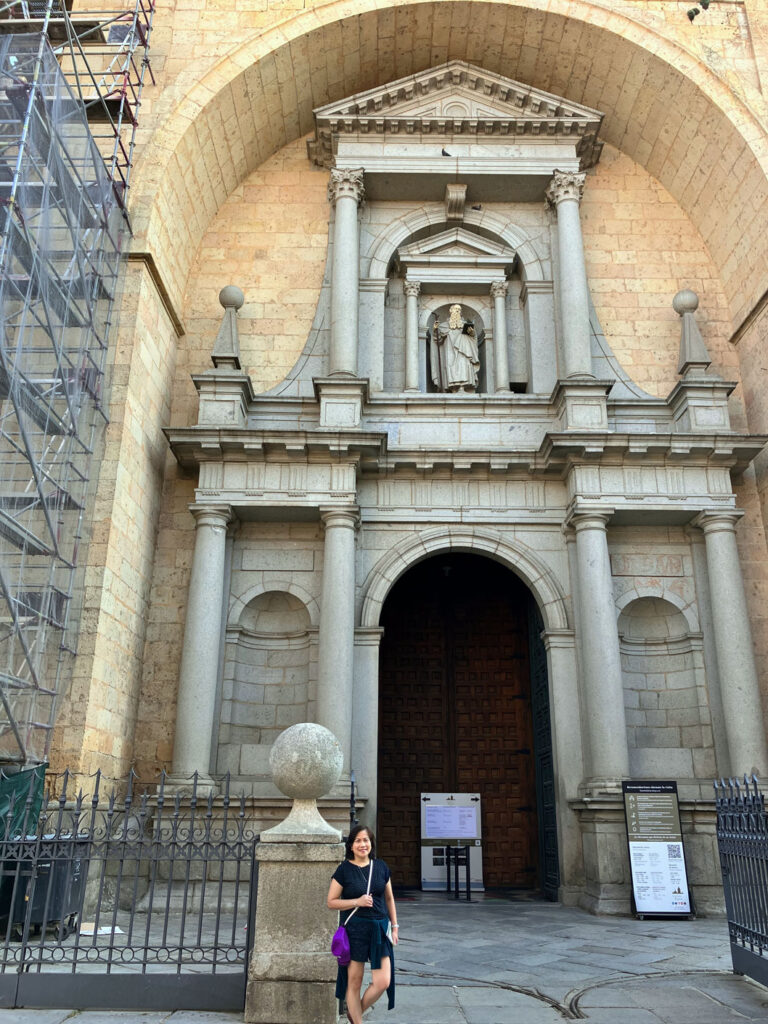
Ruby at one of the three (3) main entrances –Puerta de San Frutos– (eastern side, along Calle Marques del Arco) of the Segovia Cathedral (top photo) and a portion of the awe-inspiring interior (bottom photo). Inside are twenty-three (23) chapels and numerous works of art.
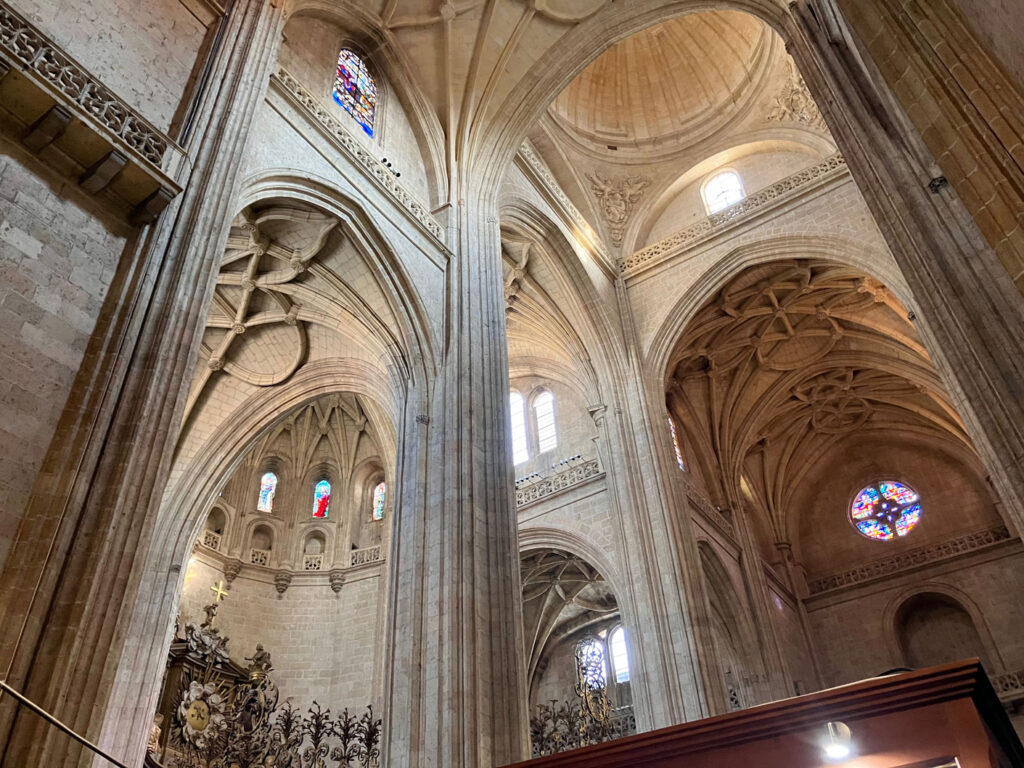
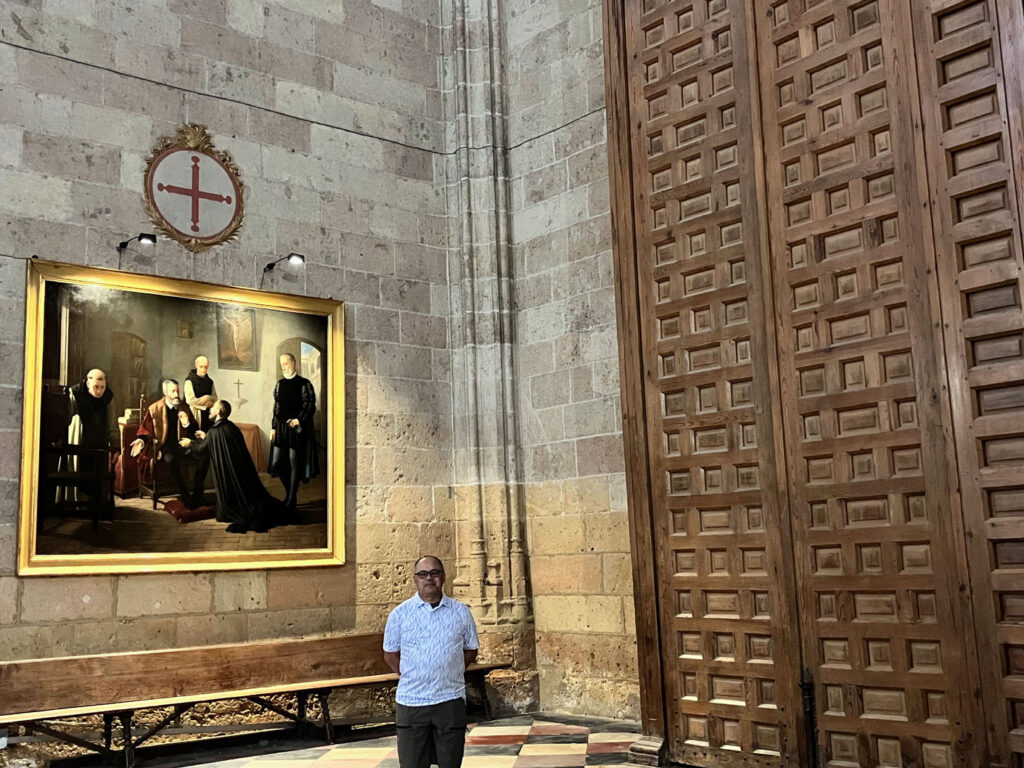
The author behind an 1862 artwork (oil on canvas) of painter Carlos María Esquivel y Rivas – “Visit of San Francisco de Borja to Emperor Charles V in the Yuste Monastery.” The massive door on the right leads to one of the chapels inside.
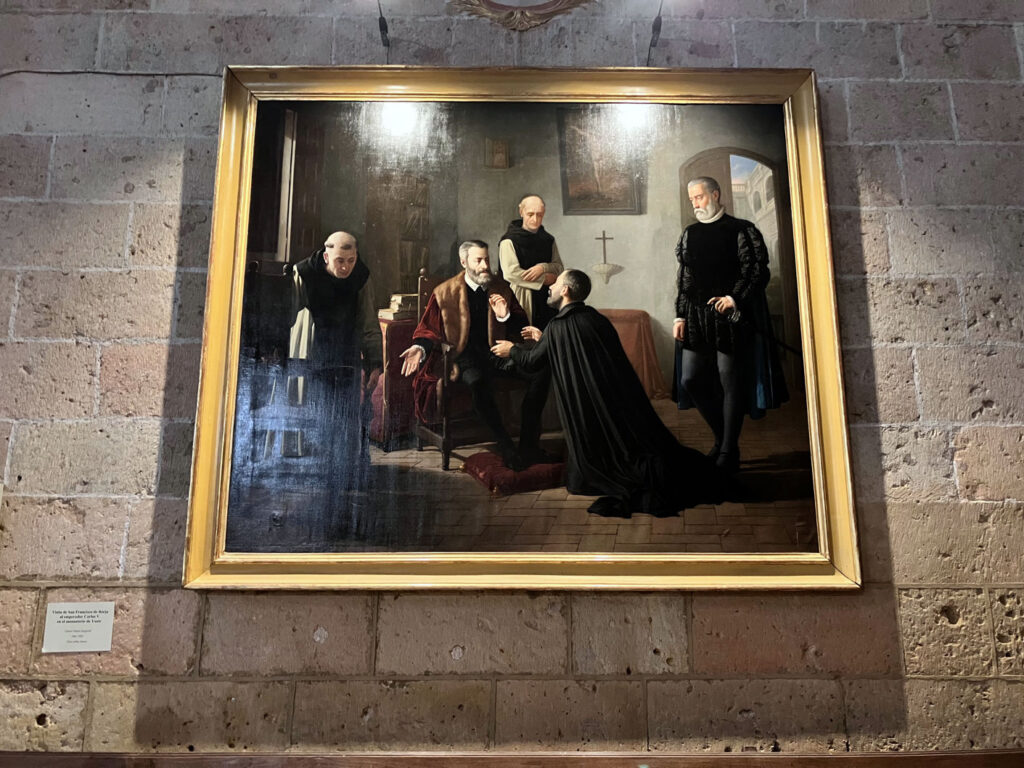
We spent several hours inside the massive cathedral, admiring the architecture, gilded altars, and all the artworks—paintings, sculptures, and frescoes —while not forgetting the mind-boggling fact that, while other countries today are yet to be discovered, Spain already had this magnificent cathedral built.
After changing to more comfortable clothes to temper the noonday heat, we wasted no time and took off to the Plaza del Azogueo – just a few yards from where the taxi dropped us off an hour ago.
As you head towards Plaza del Azogueo, this is what you’ll see as soon as you emerge from Calle Cervantez.
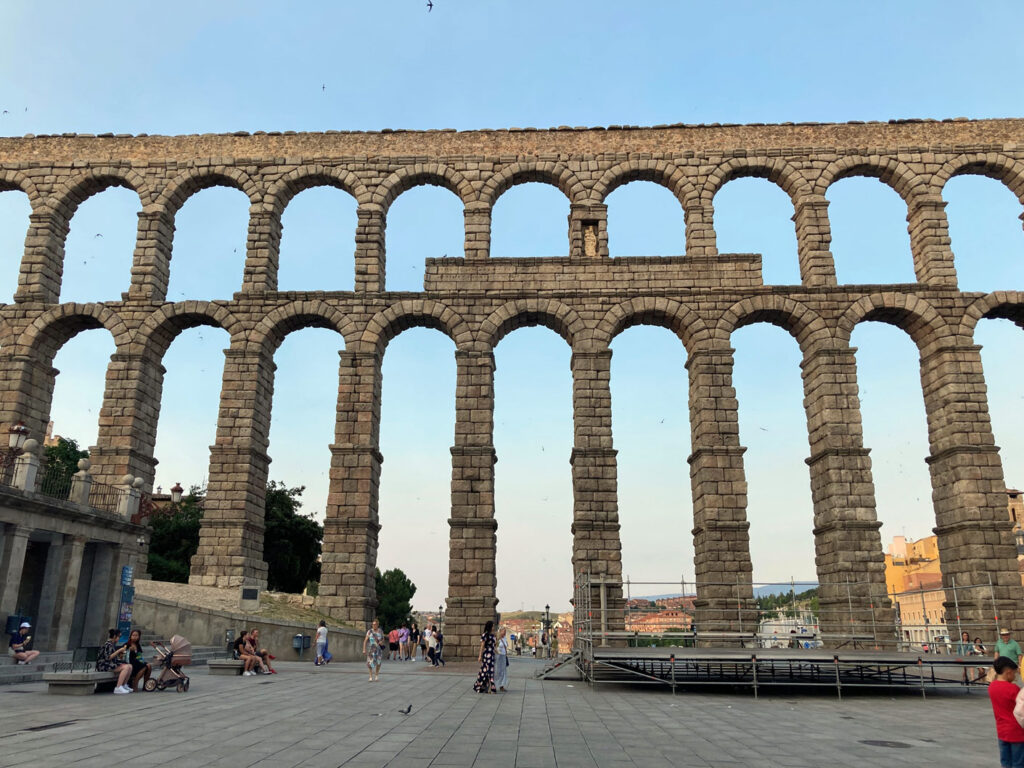
We took pictures of the spectacular aqueduct, a two-tiered structure with no mortar between its huge granite stone blocks.
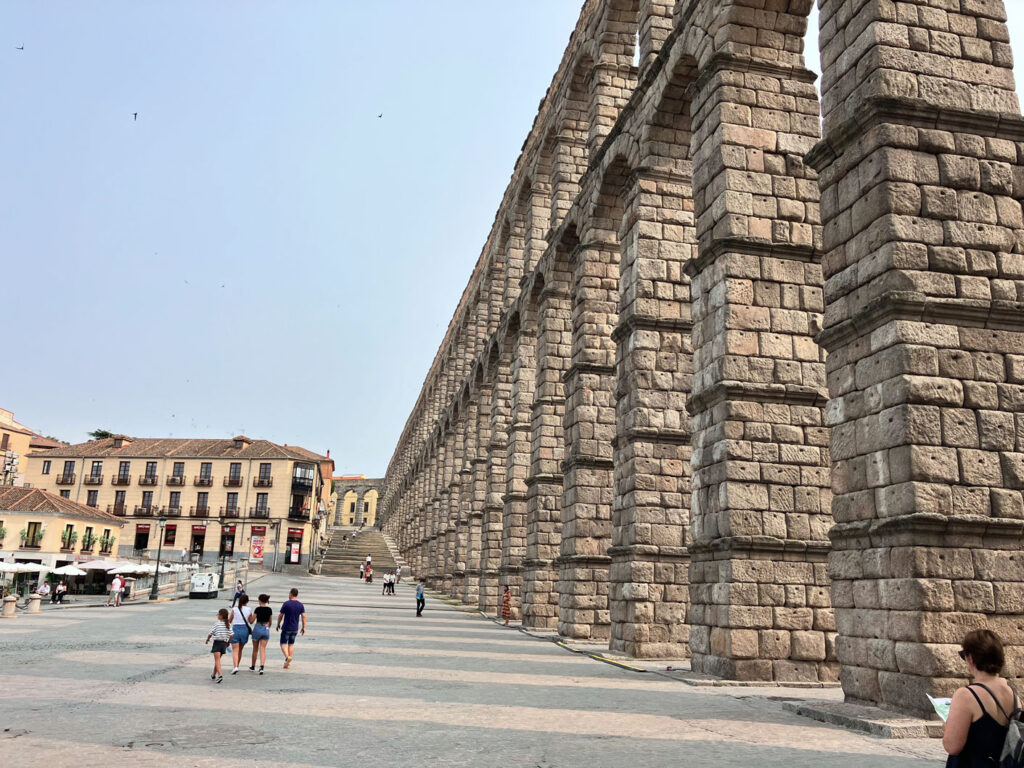
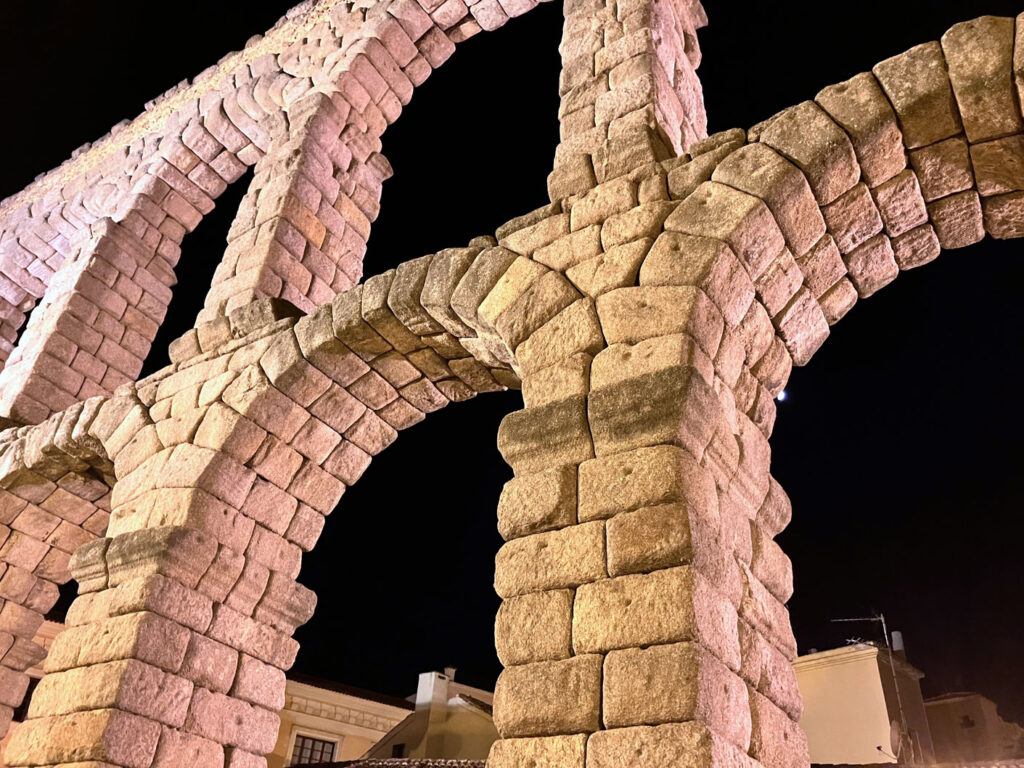
For food lovers, there’s another treat in Segovia that one shouldn’t miss: dining at Restaurante Mesón de Cándido. Segovia is noted for its Castilian dishes, but one item on the menu that you shouldn’t miss is the “cochinillo asado” – roasted suckling pig.
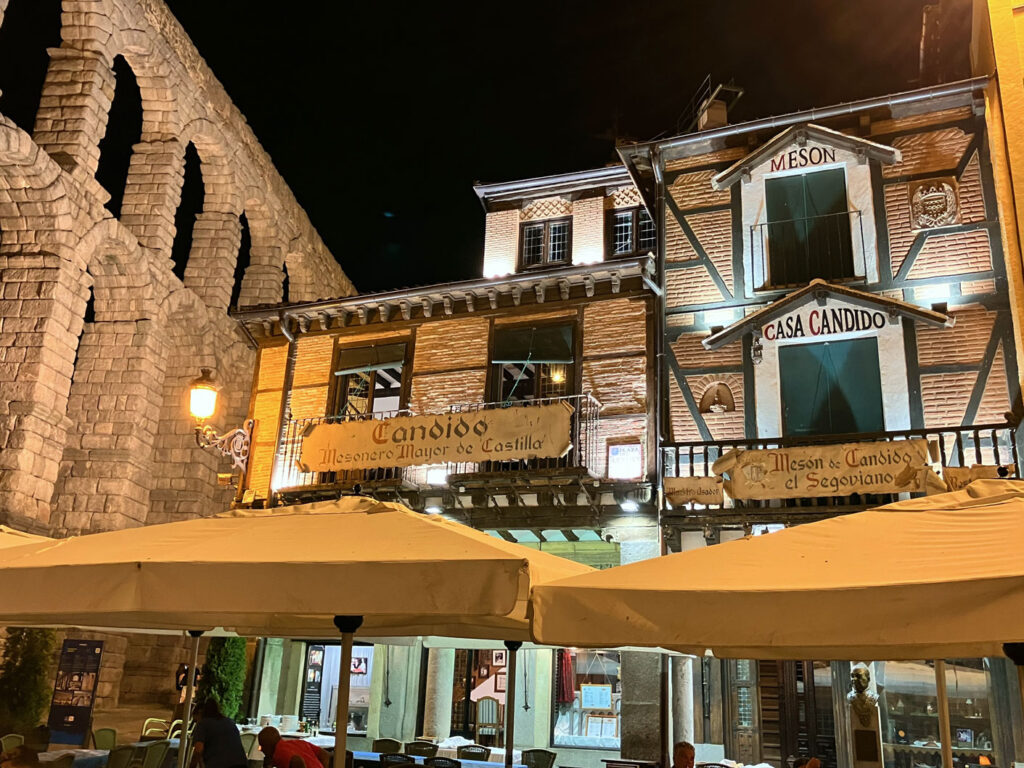
Aside from the cochinillo asado, we had beans with pork cheeks, salad, bread, beer, and some of the best red wine in Segovia for dinner. Then, we soaked in as much history and views of the Roman aqueduct as we could until the late hours of the evening.
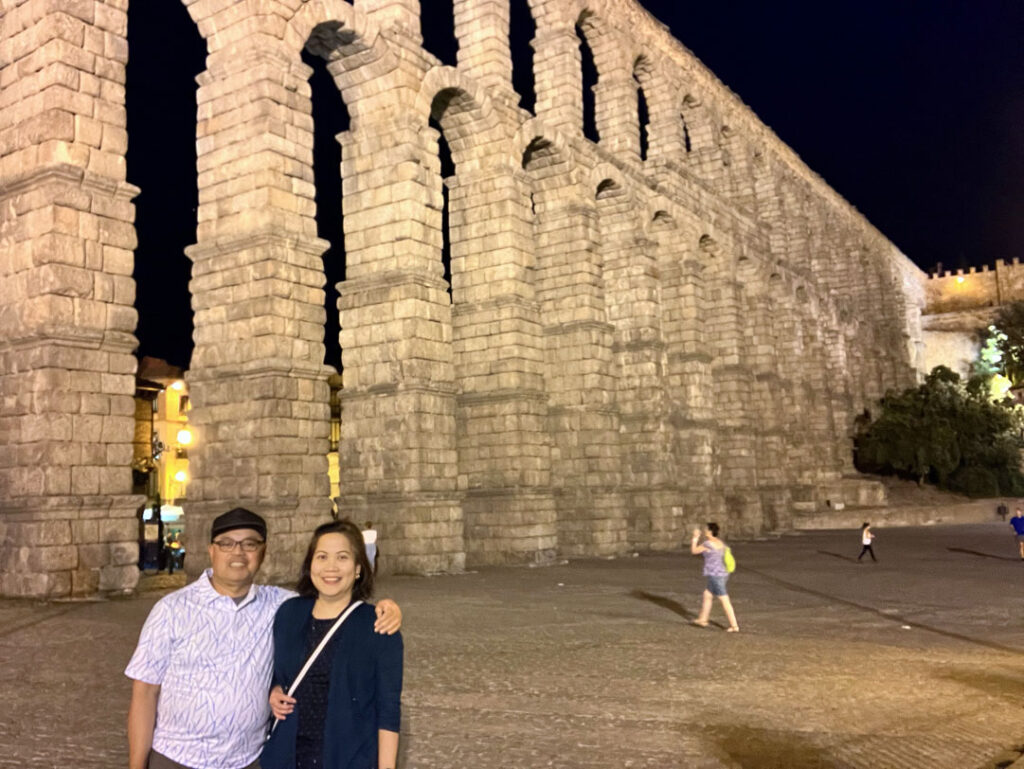
We woke up early the following morning to visit the Alcazar, and, to our delight, the Plaza Mayor, which had been bustling with visitors the day before, was quiet except for a few early risers and the early morning deliveries of supplies. Our driver informed us that, on average, the medieval city gets about 2,000 visitors daily.
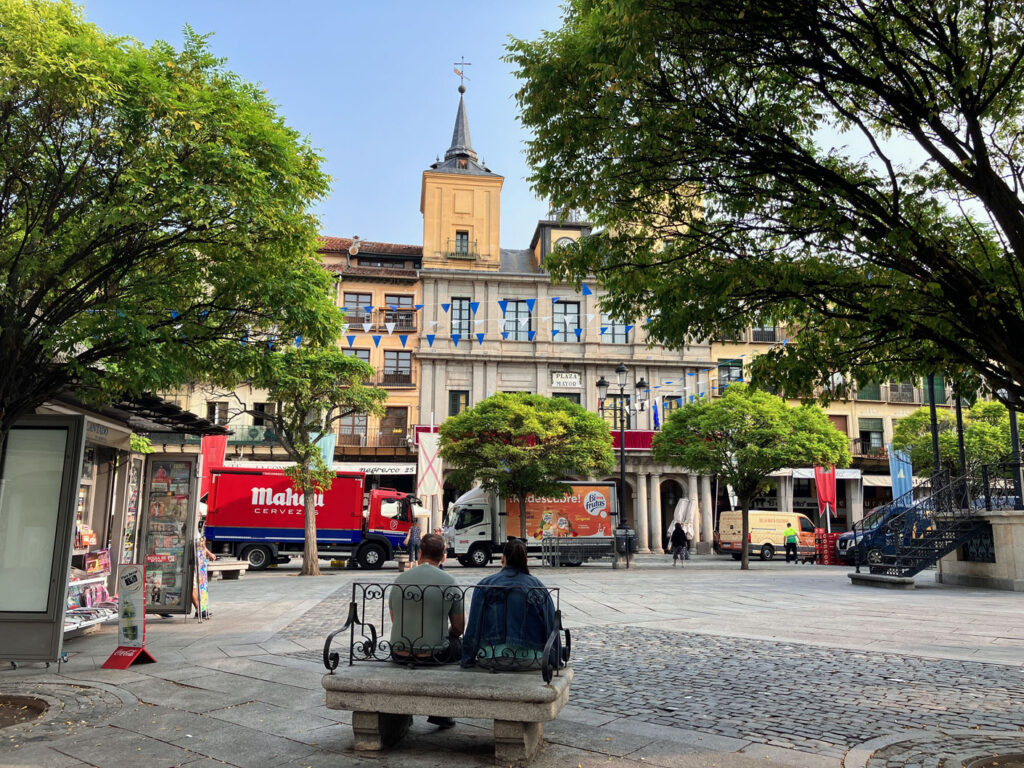
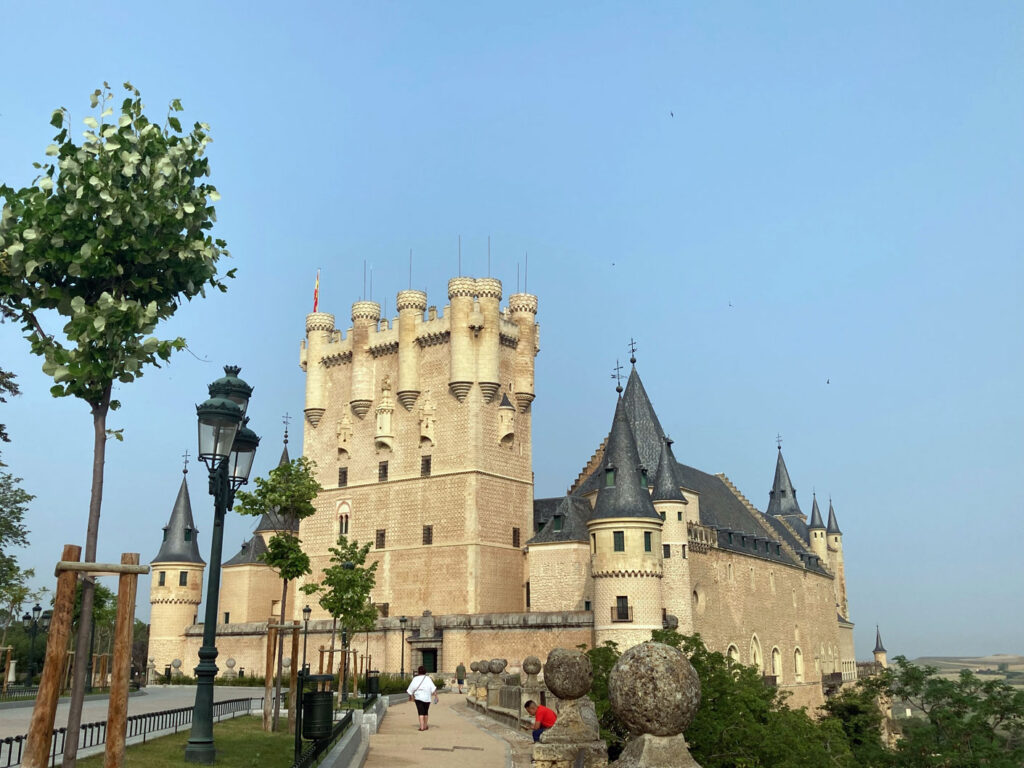
The medieval castle of Segovia had been around since the 12th century and is where Isabela I (the Catholic) sought refuge before being proclaimed Queen of Castile and Leon in 1474. It was also the site of the last meeting between Christopher Columbus and King Ferdinand II (the Catholic) before the explorer’s death.
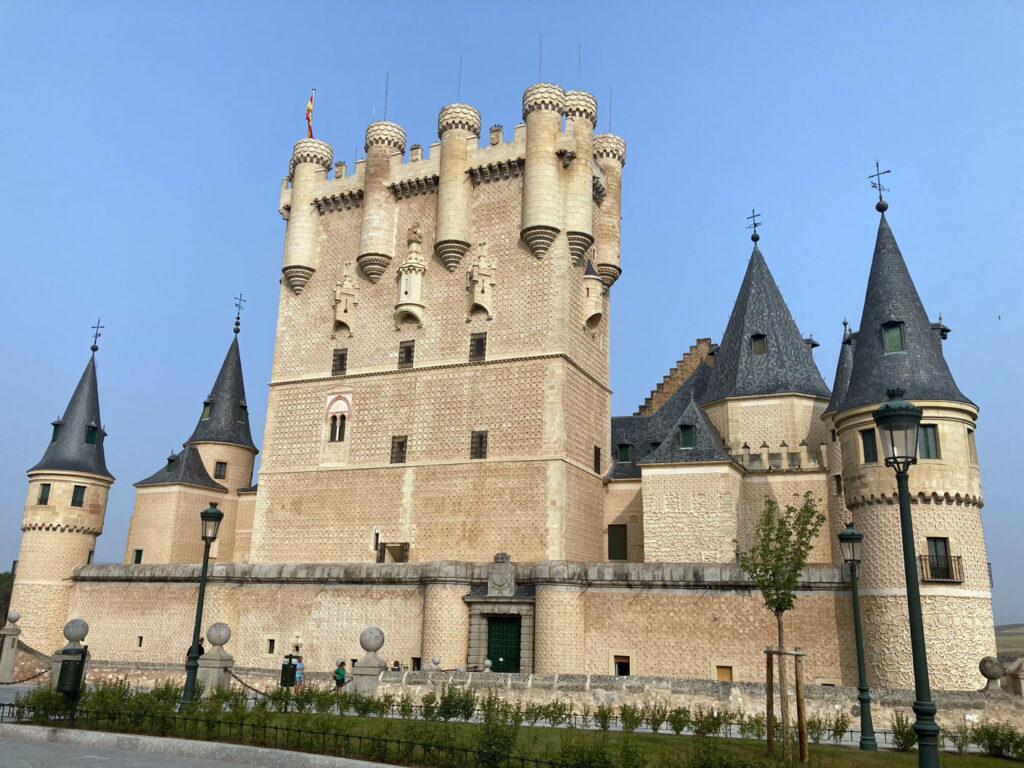
From the Alcazar, we opted to walk along parts of its fortification walls that meander down towards the city and where vehicular traffic is allowed.
While we bade farewell to the Alcazar, we were treated to magnificent views of the Segovia Cathedral and its 108-meter tower.
